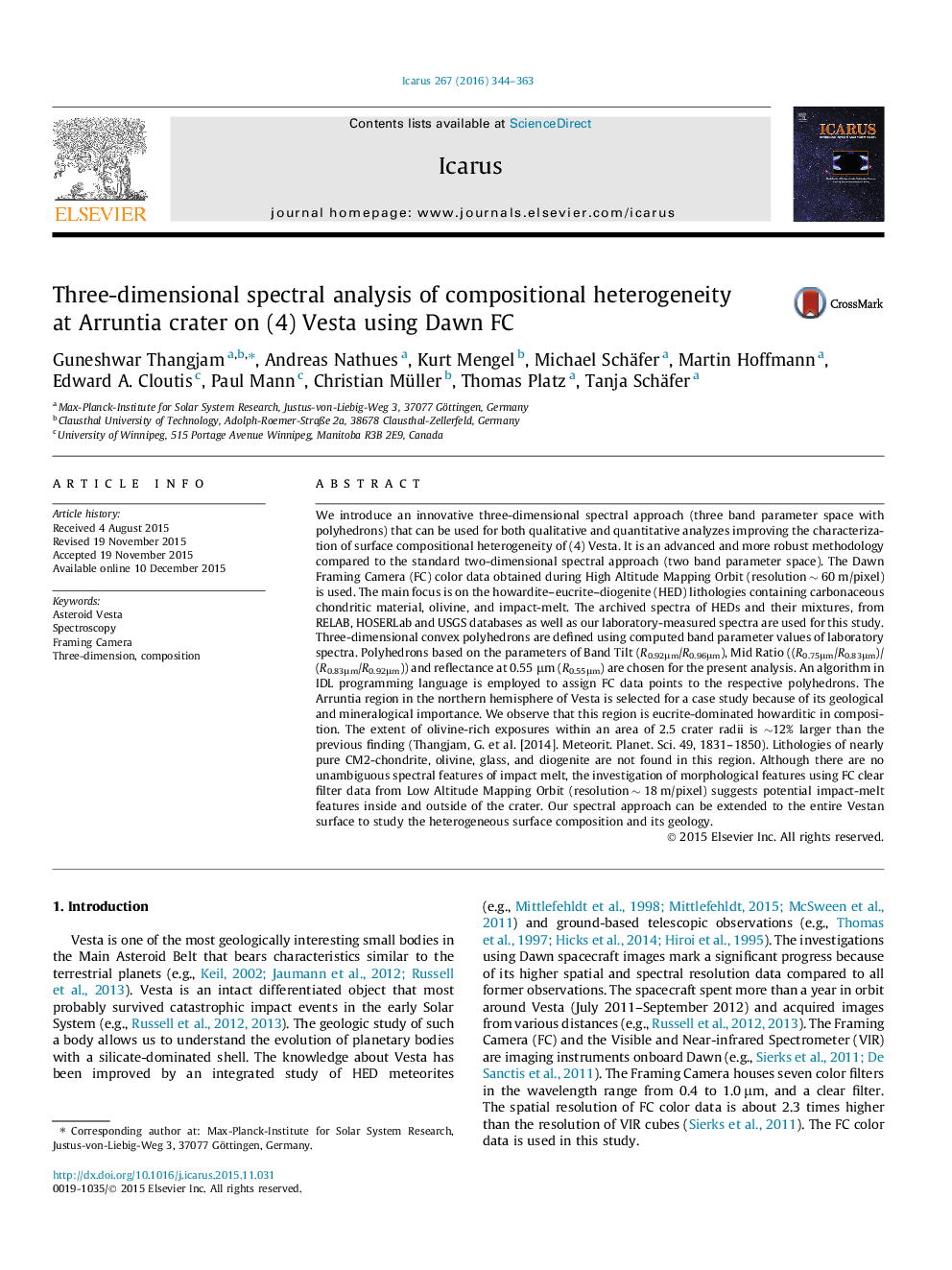| Article ID | Journal | Published Year | Pages | File Type |
|---|---|---|---|---|
| 8135754 | Icarus | 2016 | 20 Pages |
Abstract
We introduce an innovative three-dimensional spectral approach (three band parameter space with polyhedrons) that can be used for both qualitative and quantitative analyzes improving the characterization of surface compositional heterogeneity of (4) Vesta. It is an advanced and more robust methodology compared to the standard two-dimensional spectral approach (two band parameter space). The Dawn Framing Camera (FC) color data obtained during High Altitude Mapping Orbit (resolution â¼Â 60 m/pixel) is used. The main focus is on the howardite-eucrite-diogenite (HED) lithologies containing carbonaceous chondritic material, olivine, and impact-melt. The archived spectra of HEDs and their mixtures, from RELAB, HOSERLab and USGS databases as well as our laboratory-measured spectra are used for this study. Three-dimensional convex polyhedrons are defined using computed band parameter values of laboratory spectra. Polyhedrons based on the parameters of Band Tilt (R0.92μm/R0.96μm), Mid Ratio ((R0.75μm/R0.83μm)/(R0.83μm/R0.92μm)) and reflectance at 0.55 μm (R0.55μm) are chosen for the present analysis. An algorithm in IDL programming language is employed to assign FC data points to the respective polyhedrons. The Arruntia region in the northern hemisphere of Vesta is selected for a case study because of its geological and mineralogical importance. We observe that this region is eucrite-dominated howarditic in composition. The extent of olivine-rich exposures within an area of 2.5 crater radii is â¼12% larger than the previous finding (Thangjam, G. et al. [2014]. Meteorit. Planet. Sci. 49, 1831-1850). Lithologies of nearly pure CM2-chondrite, olivine, glass, and diogenite are not found in this region. Although there are no unambiguous spectral features of impact melt, the investigation of morphological features using FC clear filter data from Low Altitude Mapping Orbit (resolution â¼Â 18 m/pixel) suggests potential impact-melt features inside and outside of the crater. Our spectral approach can be extended to the entire Vestan surface to study the heterogeneous surface composition and its geology.
Keywords
Related Topics
Physical Sciences and Engineering
Earth and Planetary Sciences
Space and Planetary Science
Authors
Guneshwar Thangjam, Andreas Nathues, Kurt Mengel, Michael Schäfer, Martin Hoffmann, Edward A. Cloutis, Paul Mann, Christian Müller, Thomas Platz, Tanja Schäfer,
